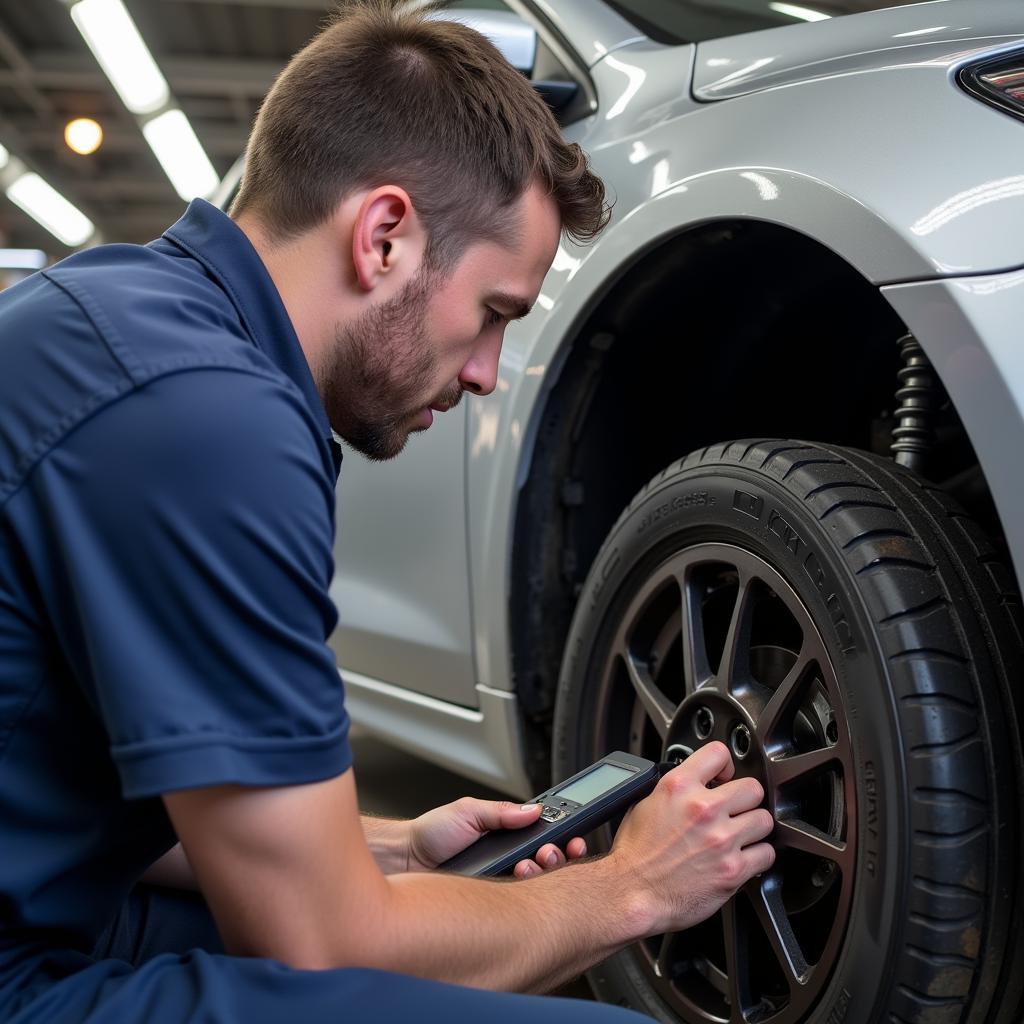Understanding how to repair a car clutch plate is crucial for any driver wanting to avoid costly repairs and extend the life of their vehicle. A failing clutch can significantly impact your driving experience, making gear changes difficult and potentially leaving you stranded. This guide provides a comprehensive overview of clutch plate repair, covering everything from diagnosis to replacement.
Identifying a Failing Clutch Plate
Several symptoms can indicate a failing clutch plate. These include difficulty shifting gears, a slipping clutch (engine revs increase without a corresponding increase of speed), a burning smell, and a spongy or stiff clutch pedal. Recognizing these signs early can prevent further damage to your transmission and save you money in the long run. If your car exhibits any of these symptoms, it’s crucial to inspect your clutch plate.
Tools and Materials Needed for Clutch Plate Repair
Before beginning any repair, gather the necessary tools and materials. You’ll need a jack and jack stands, a socket set, wrenches, a clutch alignment tool, a new clutch plate, a new pressure plate, and optionally a new release bearing. Having everything ready beforehand streamlines the process and avoids unnecessary delays.
 Car Clutch Repair Tools and Parts
Car Clutch Repair Tools and Parts
Step-by-Step Clutch Plate Replacement Guide
Replacing a clutch plate can be a challenging task, but with the right guidance and preparation, it’s manageable. Safety is paramount; always disconnect the battery and secure the vehicle properly before starting.
- Prepare the Vehicle: Disconnect the battery and securely raise the vehicle using a jack and jack stands.
- Remove the Transmission: This involves disconnecting the drive shafts, shift linkage, and any other components connected to the transmission.
- Access the Clutch Assembly: Once the transmission is removed, you will have access to the clutch assembly, including the pressure plate, clutch disc, and release bearing.
- Remove the Old Clutch Plate: Carefully remove the old clutch plate, pressure plate, and release bearing, inspecting them for wear and tear.
- Install the New Clutch Components: Install the new clutch plate, pressure plate, and release bearing using a clutch alignment tool to ensure proper alignment.
- Reassemble the Transmission: Carefully reattach the transmission, ensuring all connections are secure.
- Reconnect Drive Shafts and Linkage: Reconnect the drive shafts, shift linkage, and any other components that were disconnected.
- Lower the Vehicle: Carefully lower the vehicle and reconnect the battery.
 Installing New Clutch Plate and Pressure Plate
Installing New Clutch Plate and Pressure Plate
Common Clutch Plate Issues
Besides normal wear and tear, several other issues can affect clutch plates. Overheating, caused by excessive slipping or riding the clutch, can warp the plate and lead to premature failure. Contamination from oil or grease can also reduce the clutch’s effectiveness.
When to Seek Professional Help
While replacing a clutch plate is possible for experienced DIYers, it’s a complex job that requires specialized tools and knowledge. If you’re not comfortable working on your car’s transmission, it’s best to seek professional help. A qualified mechanic can diagnose and repair any clutch issues efficiently and effectively.
 Mechanic Inspecting Car Clutch System
Mechanic Inspecting Car Clutch System
Conclusion
Knowing how to repair a car clutch plate can empower you to address clutch problems effectively, whether through DIY repair or by seeking professional assistance. Regular maintenance and proper driving habits can extend the lifespan of your clutch and ensure smooth, reliable performance.
FAQs
- What are the signs of a worn clutch plate? Difficulty shifting, slipping clutch, burning smell, and a spongy or stiff clutch pedal are common signs.
- How much does it cost to replace a clutch plate? The cost varies depending on the make and model of your car but typically ranges from $500 to $1500.
- How long does a clutch plate last? A clutch plate can last anywhere from 30,000 to 100,000 miles, depending on driving habits and conditions.
- Can I drive with a worn clutch plate? While possible, driving with a worn clutch plate can cause further damage to the transmission and potentially leave you stranded.
- How can I prevent premature clutch wear? Avoid riding the clutch, avoid sudden starts and stops, and ensure your vehicle is properly maintained.
- What is a clutch alignment tool? A clutch alignment tool ensures the clutch disc is correctly centered within the pressure plate and flywheel.
- Do I need to replace the pressure plate and release bearing along with the clutch plate? It’s generally recommended to replace all three components simultaneously as they tend to wear out at similar rates.
Common Clutch Plate Repair Scenarios:
- Slipping Clutch: This often occurs due to a worn-out clutch disc. Replacing the clutch disc is usually the solution.
- Difficulty Shifting Gears: This can be caused by a worn clutch, a faulty pressure plate, or a problem with the hydraulic system.
- Burning Smell: A burning smell usually indicates a slipping clutch and overheating of the clutch disc.
Related Articles and Further Reading:
- Understanding Your Car’s Transmission System
- Common Car Maintenance Tasks You Can Do Yourself
- Troubleshooting Car Problems: A Beginner’s Guide
Need help with your car clutch? Contact us via WhatsApp: +1(641)206-8880, Email: [email protected]. Our 24/7 customer support team is ready to assist you.


